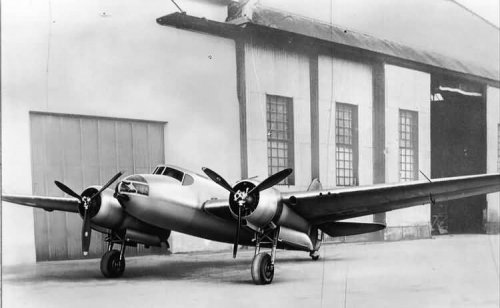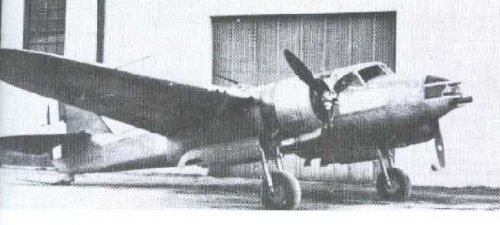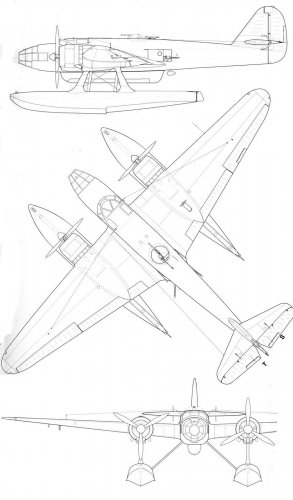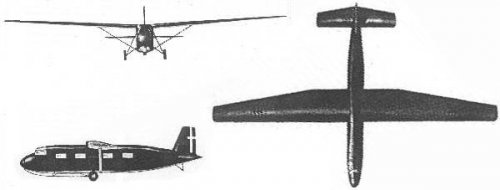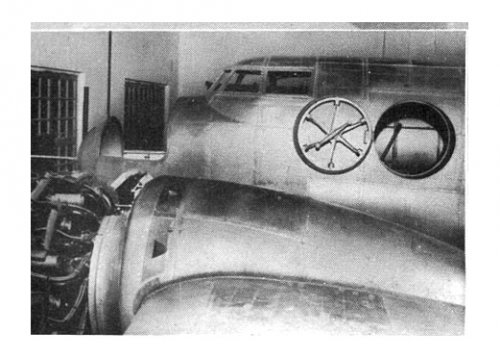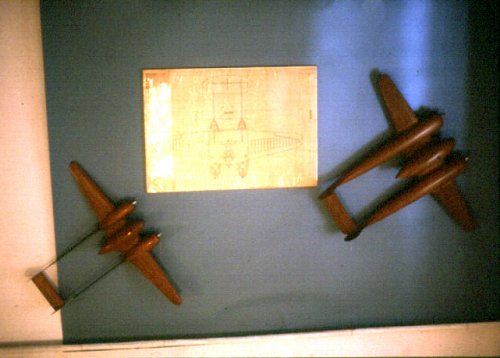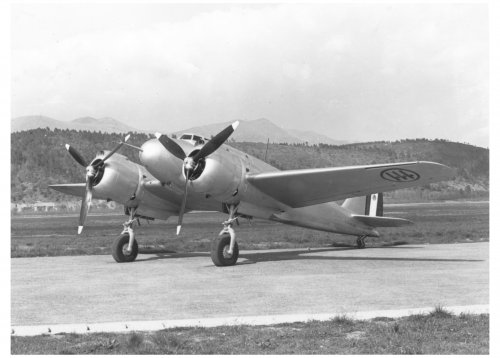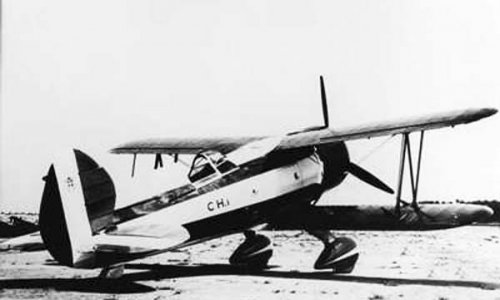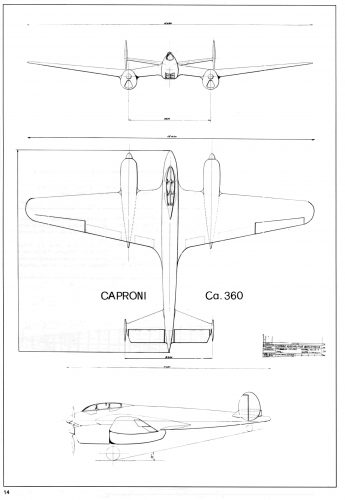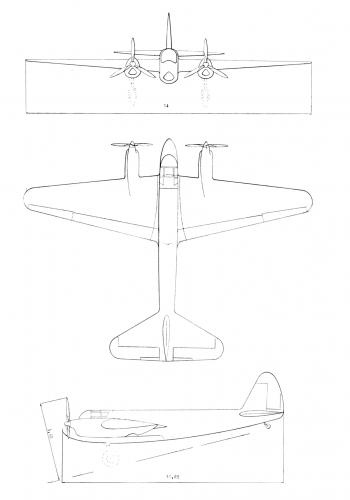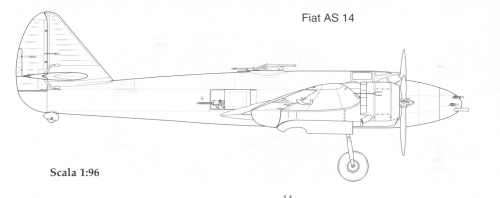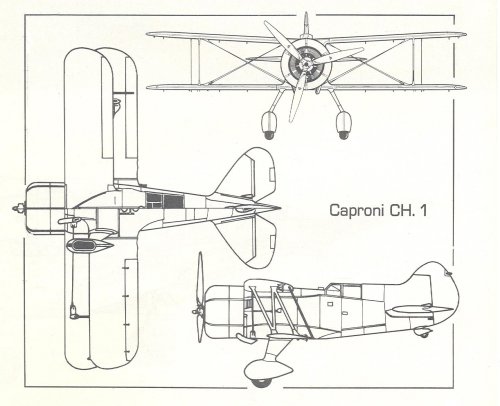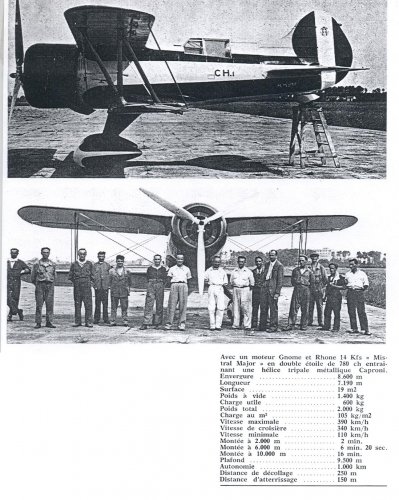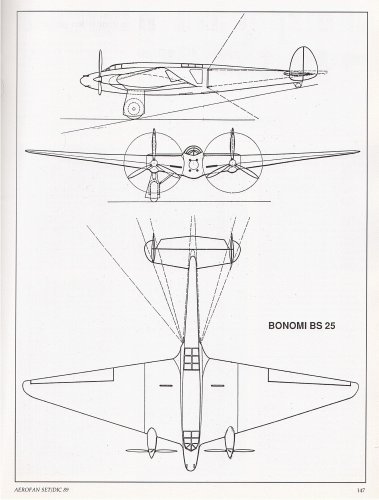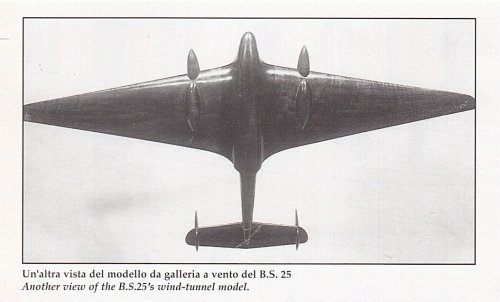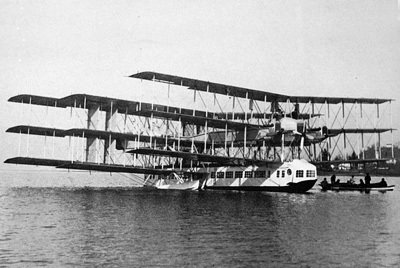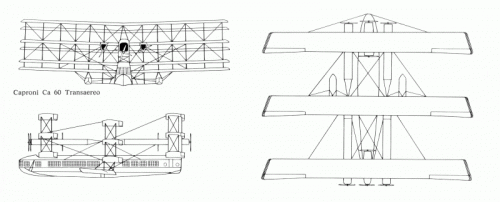Hi javierarg,
a bit lately I try an answer to your post of November 25 last, even I think that this answer could deserve a separate thread, devoted to P.111. The moderator will decide about.
As you know, Piaggio's eng. Casiraghi had a 'penchant' for pressurised aircraft and engine buried in the fuselage or wing section (but that is not the case for P.111). Italian industry lacked any experience in pressurised fuselage and in 1937 Casiraghi started the project of a twin-engined testbed, the P.111. Initially the aircraft was conceived with a twin-boom layout and we have two sideview of the early development even I'm not sure that the lower silhoutte is referred to a second twin-boom solution or is a single fuselage design.
We have also the picture of two wind tunnel models (improperly exhibited with a planform drawing of the SIAI-Marchetti S.55M; Piaggio as the licence to develop the metal version of it). To me the model on the left in the photo seems to be the first P.111 configuration; the right model could be a later development but could also be an aerodynamic model for the P.125 (a drawing by Gaspare Santangelo, licensed to Piaggio).
By the way, the P.111 was built as a very elegant and modern aircraft with conventional fuselage, containing an internal pressurized cockpit.
The aircraft was flown by test pilot Nicolò Lana, at Albenga-Villanova, on 9 April 1941, probably with two Piaggio P.XI RC.60-72 engine, later replaced (or to be replaced) by two P.XII RC.100/2v Tornado, rated at 1.000 PS, with Piaggio P.4003 wide-chord propellers. The prototype performed 110 test flights until the Spring of 1943, when was scrapped. During its career no attempt of altitude record was done.
Known technical data are:
wingspan 17.30 m, lenght 12.02 m, height 5.45 m, wing area 39.70 sq. m, empty weight 4,680 kg, loaded 6,800 kg, maximum take-off weight 7,575 kg, max speed 575 km/h at 10,000 m (400 km/h at sea level), service ceiling 12,000 m, range 1,660 km.









